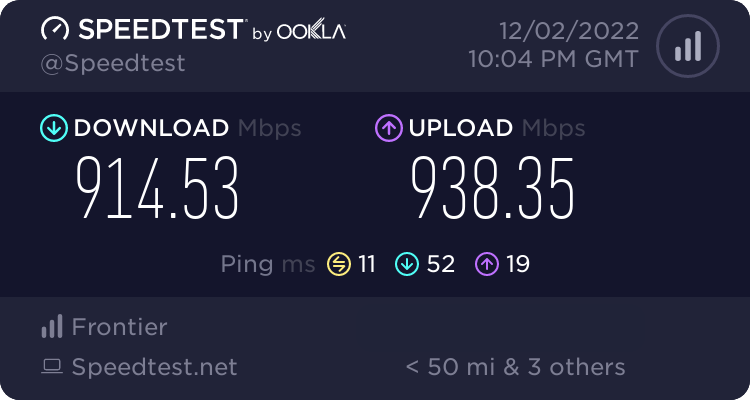When The Expanse was cancelled on the SYFY channel, I somewhat expected it as it was too good for that network (I was shocked something so good was ever on that channel in the first place). Then when I found out it was picked up by Amazon, I had mixed feelings. While it meant the show would continue, it also meant that it would not persist for more than 3 additional seasons. I really wanted to see a Magnetar class ship on the screen but alas it was not meant to be. So, with a few exceptions, why is it that a show doesn’t persist more than 3 seasons on a streaming service?
 I got new internet service in the past month. Frontier ran fiber into my neighborhood and I’ve been enjoying the benefits ever since. As you can see I have symmetric gigabit.
I got new internet service in the past month. Frontier ran fiber into my neighborhood and I’ve been enjoying the benefits ever since. As you can see I have symmetric gigabit.